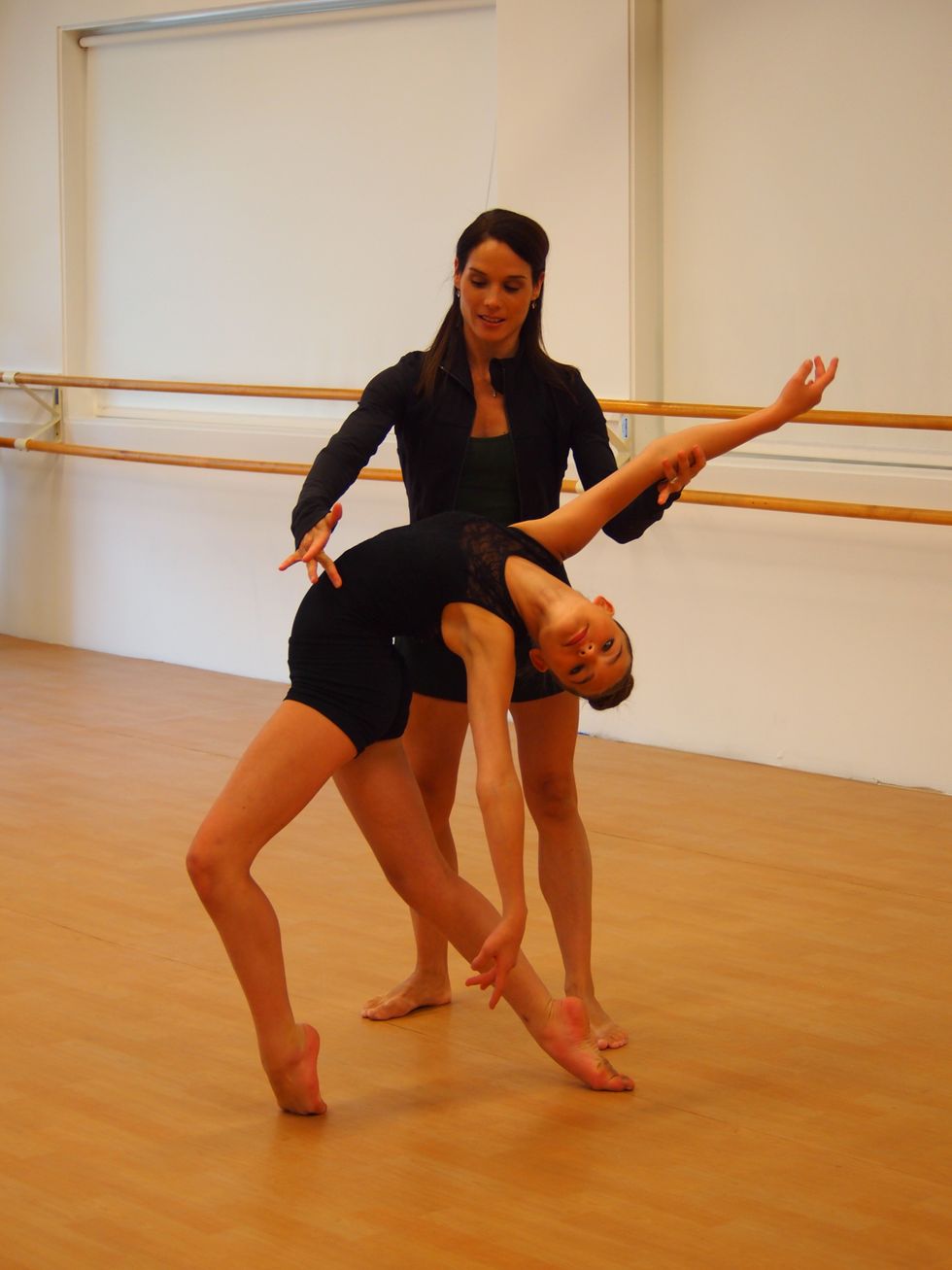
With little round tummies, shoulders up to their ears and limbs akimbo, young dancers are adorable twirling around in their first tutus and ballet slippers.
When they graduate from pre-ballet, though, proper alignment will become a top priority. Learning correct placement of the spine early gives children a solid foundation for their future training. Bad habits like slumped shoulders, buckled bottoms and arched backs with protruding tummies can inhibit technical development or lead to injury. Below, experts share three key strategies to help young dancers understand placement.
Use Imagery
Young dancers aren’t yet able to understand how the bones, joints and muscles work to engage proper alignment. Gretchen Gunther, who teaches at The School at Steps in New York City, says that using imagery can help them activate their bodies, while making repetitive work playful. To engage the core and straighten the back, she has dancers imagine a marionette string pulling them up through their spines and pretend their belly buttons are push buttons. Immediately, she sees their backs lengthen and abdominals pull toward their spines.
 Gunther says simple port de bras helps youngsters concentrate. Photo by A. Greenwald, courtesy of Steps
Gunther says simple port de bras helps youngsters concentrate. Photo by A. Greenwald, courtesy of Steps
To access the subtler lower abdominals, Gunther asks students to think of what it feels like to zip up a tight pair of jeans. If she finds dancers twisting, she has them picture the torso as a rectangle, with shoulders and hips for corners, stacked and even, to keep everything on an even plane.
Physically Adjust Them
It’s sometimes necessary to use physical manipulation while teaching children alignment, because they haven’t yet experienced what the positions should look and feel like. “I’m very hands-on,” says Kelly Burke, artistic director of Westchester Dance Academy in Mount Kisco, New York. “I put them into place, especially the younger dancers.” That way, their muscle memory understands the effort it takes to align the spine.
 Kelly Burke of Westchester Dance Academy. Photo courtesy of Kelly Burke
Kelly Burke of Westchester Dance Academy. Photo courtesy of Kelly Burke
A finger under the chin or a light touch on the back or tummy is enough to remind them of the alignment corrections they’ve learned, says Gunther. Another strategy is to have them adjust themselves. She often has students push lightly at their own belly buttons to see if their cores are activated.
Keep It Simple
It takes a lot of effort for young dancers to organize their growing bodies, so Gunther simplifies port de bras by having students put their hands on their hips or fingers on their shoulders throughout some of barre and center, especially during active movements like chassés and gallops.
Burke often teaches exercises in parallel, so students can learn how the body should stack, hips over the feet, without having to worry about turnout. Slow relevés and tendus in parallel facing the barre can help them concentrate on keeping their backs straight and tummies in.
Teaching alignment to children requires gradual progression and constant reinforcement. “Ballet technique is so complex,” says Gunther, who gives short barre exercises because she finds that when work continues after students tire, they’ll often lose their placement, reinforcing bad alignment. “At this age, sometimes less is more.”
Off the Barre and On the Floor
Working on the floor helps dancers concentrate and reduces the tendency to lean, arch and twist. Anuschka Roes of Canada’s National Ballet School in Toronto uses these strength-building exercises to help young students learn to engage their cores and backs.
Dancer’s Secret Exercises
Activates the abdominals
Have students lie face down on the floor and picture a ball inside their tummies, just below the navel. It slowly rolls in place and then at a diagonal up and toward the spine, stopping at the bottom of the ribs. Students’ abdominals should be activated, with enough space to slide a hand between the waist and the floor. Repeat standing. Roes calls this exercise “the dancer’s secret,” because activating the abdominals is a subtle movement that shouldn’t be seen from the back of the body.
The Superman
Strengthens the back muscles
Have dancers lie face down, head in line with the spine. With legs in parallel and arms above the head, they raise their arms and legs a few inches off the ground. Depending on a dancer’s strength, the chest and torso may lift off the floor (without splaying the ribs). Have them hold here for 4–8 counts, resting for 8–12 in between sets. Repeat three times. The length of time they hold the position increases gradually during the exercise.



